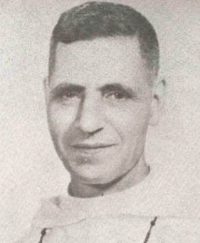Yesterday, after filling the air with whining which nobody understood, the sirens sounded the air raid alarm signal for the first time since December, 1941. The Japanese rushed as fast as they could to the shelters constructed for their exclusive use, hiding there until the all clear signal was sounded. The students, ordered by their teachers to assemble on the ground floor, were showing signs of joy which they could hardly contain. The people from their windows or from the streets, with festive countenances, scrutinized the distant skies hoping to find their liberators. The internees, obeying very strict orders, were enclosed in their rooms or remained in profound silence. Only some convulsive laughters could be heard, characterized by hysterics from those who had been desperately waiting, for the last three years for the coming of their compatriots. I was straining my ears to listen to the echoes of one explosion.
But the liberators did not come. And the Yankee bombs did not disclose their explosive and destructive force which the Japanese have been fearing first of all. Are their blasts so powerful that no reinforced concrete building could withstand them? Will they explode with deafening force? We were advised to dig holes one meter deep. They are said to be the safest and easiest shelters to construct, but almost no one builds such trenches voluntarily. The people believed that Manila will be respected. At most, the places to be bombed are those along the piers and the periphery of Manila where the airfields are situated. Besides, the soil of Manila is low, and diggings are certain to yield water. The Japanese warden wanted, but did not order, that diggings be made. The prisoners were complaining that they would have to make three hundred meters of trenches for the four thousand or more prisoners and they do not have the necessary tools. There are other reasons of course.
